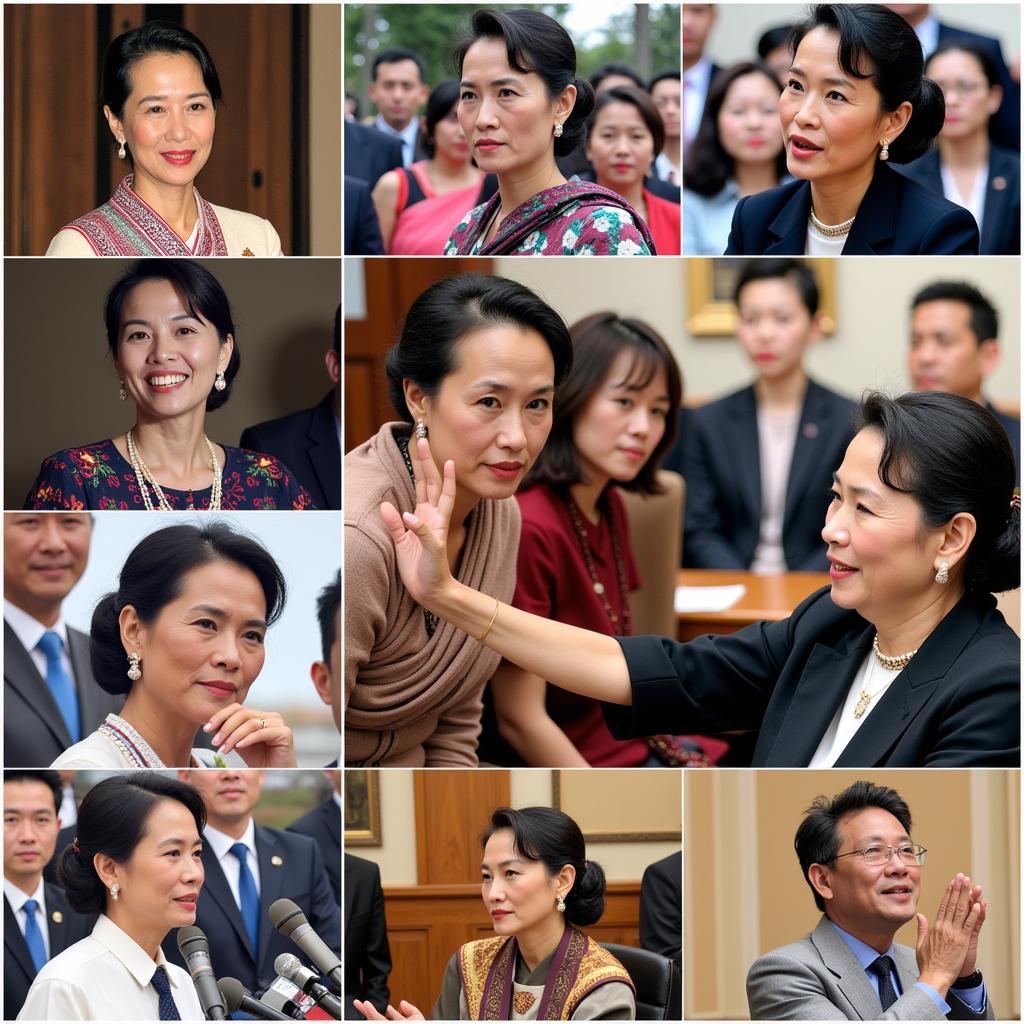The fascinating interplay of languages within ASEAN often leads us to the question of “Asean Bahasa Melayu,” its significance and its role in connecting this diverse region. This article delves into the intriguing relationship between Bahasa Melayu and the ASEAN community, exploring its historical context, current influence, and future potential.
The Historical Roots of Bahasa Melayu in ASEAN
Bahasa Melayu, also known as the Malay language, boasts a rich history intertwined with the maritime trade routes and cultural exchanges of Southeast Asia. Its origins can be traced back to the ancient Malay kingdoms, where it served as a lingua franca, facilitating communication between diverse communities. This historical role laid the foundation for its continued importance in the region.
For centuries, Bahasa Melayu facilitated trade and diplomacy, fostering a sense of shared identity amongst the people of the archipelago. This shared linguistic heritage contributes significantly to the cultural tapestry of ASEAN. It’s a testament to the power of language in shaping societies and forging connections.
Bahasa Melayu as a Unifying Force in ASEAN
The question often arises: Why is Bahasa Melayu significant in ASEAN? It’s because it holds a unique position as a potential unifying language, capable of bridging the communication gap between diverse member states. While not the official language of ASEAN, its historical and cultural influence is undeniable. Its relative simplicity and widespread understanding make it a viable option for fostering stronger interpersonal connections within the region. Think of it as a common thread weaving through the rich tapestry of ASEAN languages, promoting understanding and collaboration.
Several ASEAN countries, including Malaysia, Brunei, Indonesia, and Singapore, recognize Bahasa Melayu as an official language or a significant language within their borders. This widespread usage further strengthens its potential as a tool for regional integration. 10 asean countries and their languages gives a better overview of the linguistic landscape of ASEAN.
The Role of Bahasa Melayu in ASEAN Diplomacy
Bahasa Melayu plays a subtle yet important role in ASEAN diplomacy. While English is the official working language of the association, Bahasa Melayu is often used in informal settings, fostering a sense of camaraderie and shared cultural understanding among diplomats.
Bahasa Melayu in the Digital Age: Challenges and Opportunities
The digital age presents both challenges and opportunities for Bahasa Melayu in ASEAN. The dominance of English in the online sphere poses a threat to the language’s visibility and usage. However, the rise of digital platforms also provides avenues for promoting and preserving the language.
Promoting Bahasa Melayu Through Digital Media
Digital media can be leveraged to create engaging content in Bahasa Melayu, catering to a younger audience and ensuring its continued relevance in the digital age. This can include educational resources, entertainment content, and online communities dedicated to the language. 5th asean youth video contest is a great example of how digital platforms can promote ASEAN’s diverse cultures and languages.
Initiatives to develop digital tools and resources, such as online dictionaries and translation software, can further enhance the accessibility and usage of Bahasa Melayu in the digital realm.
“Embracing technology is crucial for ensuring the continued relevance and vibrancy of Bahasa Melayu in the 21st century,” says Dr. Faridah Ibrahim, a renowned linguist specializing in Malay languages. “Digital platforms offer unprecedented opportunities for promoting the language to a wider audience.”
The Future of Bahasa Melayu in ASEAN
The future of Bahasa Melayu in ASEAN hinges on continued efforts to promote its usage and adapt it to the evolving needs of the region. It’s crucial to foster a sense of pride and ownership among younger generations to ensure the language’s continued vitality.
“The key to the language’s survival lies in its ability to adapt and evolve,” shares Mr. Amirul Rahman, a cultural heritage advocate from Malaysia. “We must encourage its use in various domains, including education, media, and technology.” ase viewer can provide further resources and information about ASEAN cultures and languages.
Investing in language education and promoting multilingualism within ASEAN can create a more inclusive and interconnected region. This would not only strengthen the position of Bahasa Melayu but also enrich the cultural landscape of Southeast Asia.
In conclusion, “asean bahasa melayu” represents a vital link to the region’s shared history and cultural heritage. Embracing its potential as a unifying force and adapting it to the digital age is crucial for its continued relevance and contribution to the vibrant tapestry of ASEAN. ase elementary school can provide a good foundation for younger generations.
FAQ
- Is Bahasa Melayu the official language of ASEAN? (No, English is the official working language.)
- Which ASEAN countries use Bahasa Melayu as an official language? (Malaysia, Brunei)
- What is the historical significance of Bahasa Melayu? (It served as a lingua franca in maritime trade and cultural exchanges.)
- How can Bahasa Melayu be promoted in the digital age? (Through online platforms, educational resources, and entertainment content.)
- What is the future of Bahasa Melayu in ASEAN? (It depends on continued efforts to promote its usage and adapt it to evolving needs.)
- What are some resources for learning Bahasa Melayu? (Various online platforms and language learning apps are available.)
- How does Bahasa Melayu contribute to ASEAN identity? (It fosters a sense of shared cultural heritage and understanding.)
Need More Information?
If you require further assistance or have any questions regarding ASEAN languages and culture, please do not hesitate to contact us:
Phone: 0369020373
Email: aseanmediadirectory@gmail.com
Address: Thon Ngoc Lien, Hiep Hoa, Bac Giang, Vietnam.
We have a 24/7 customer service team ready to assist you.
